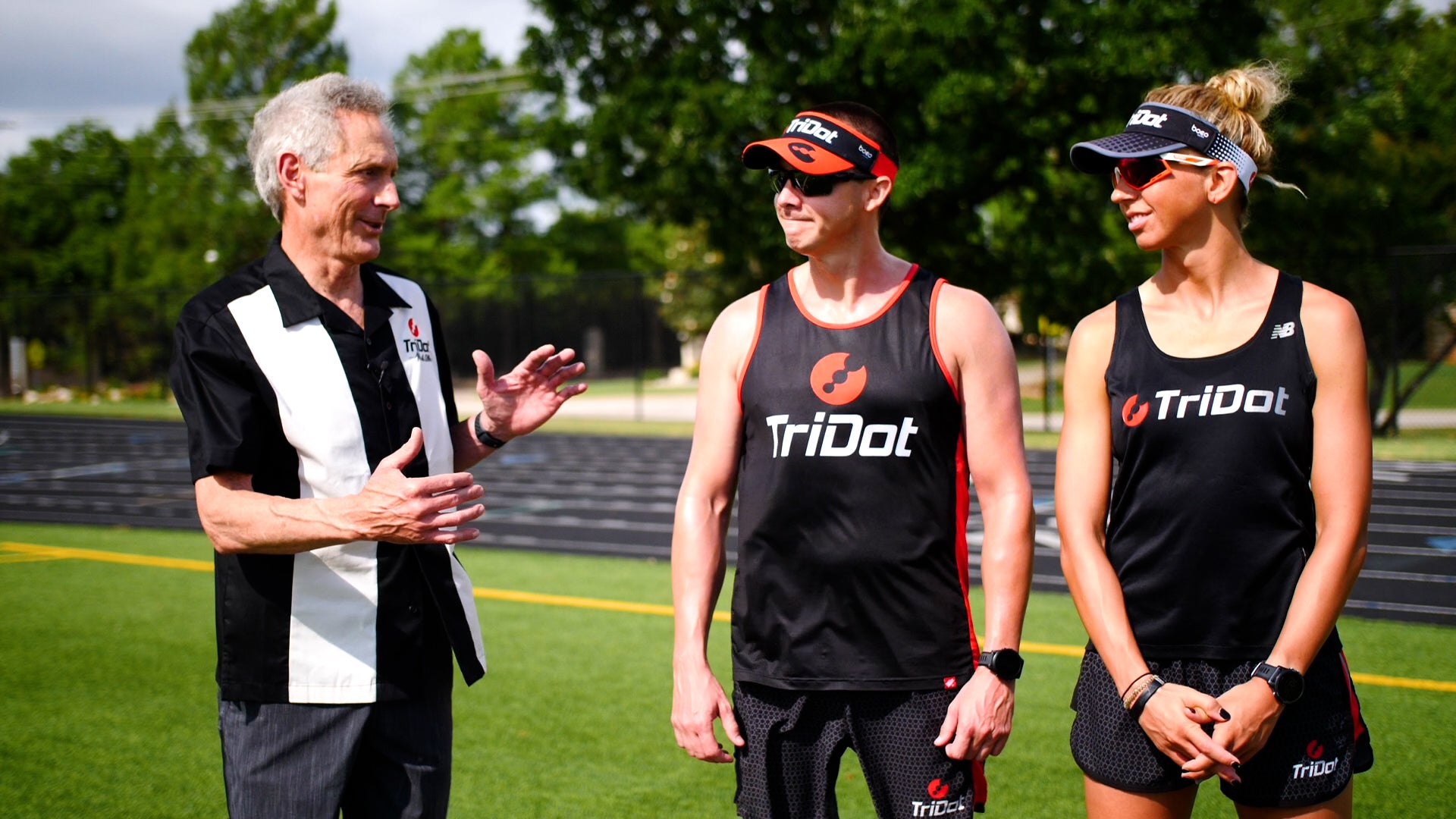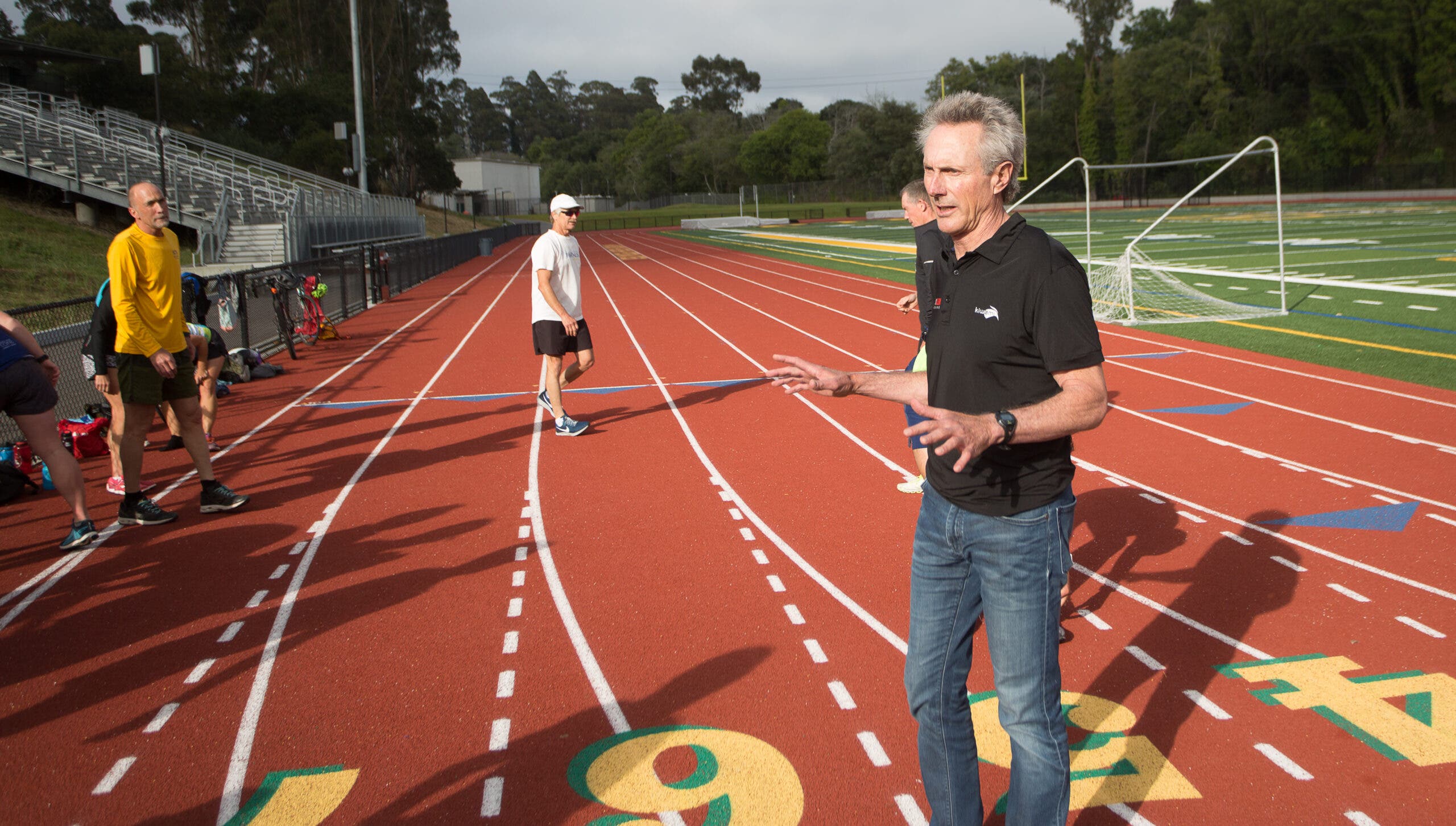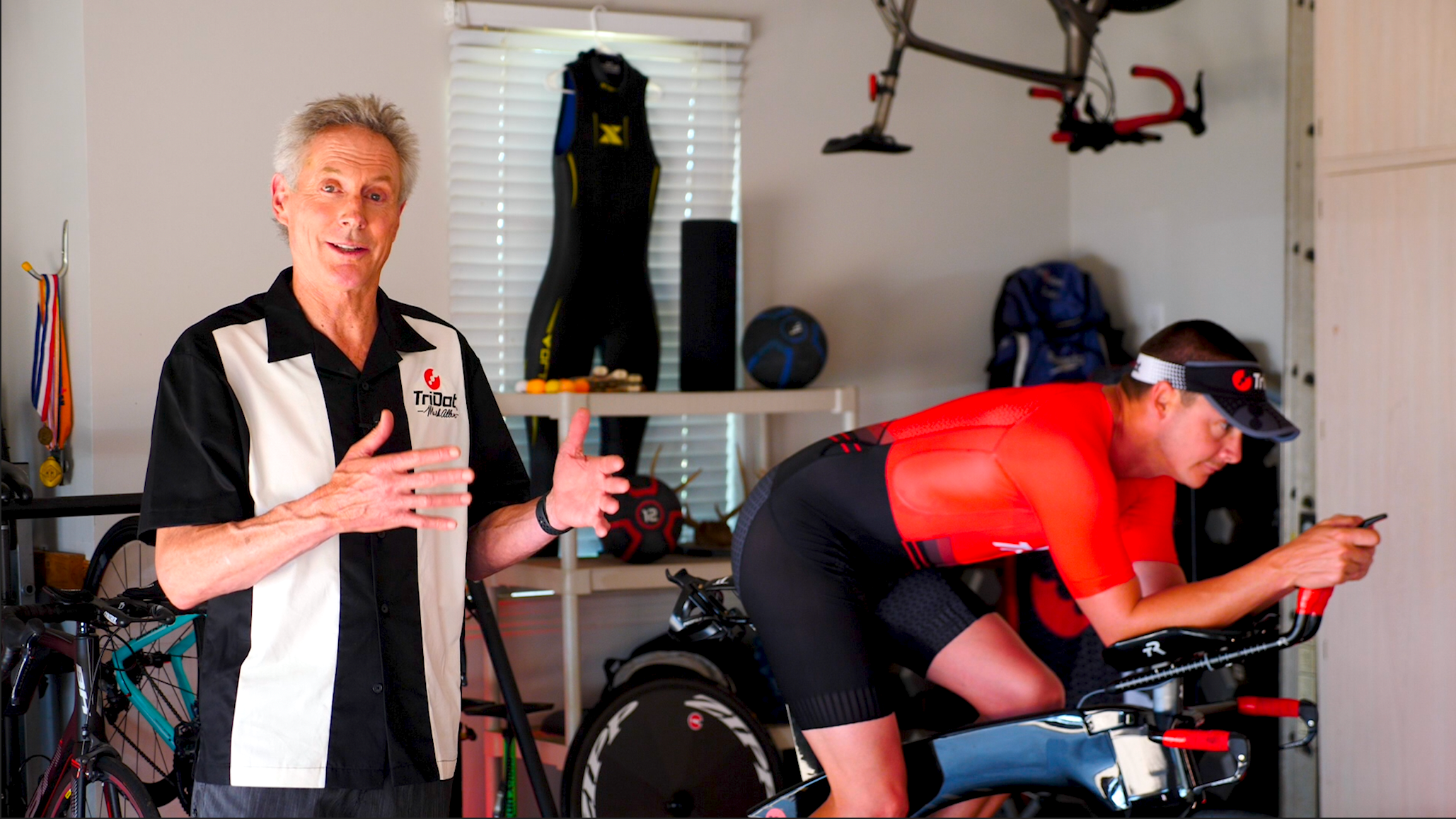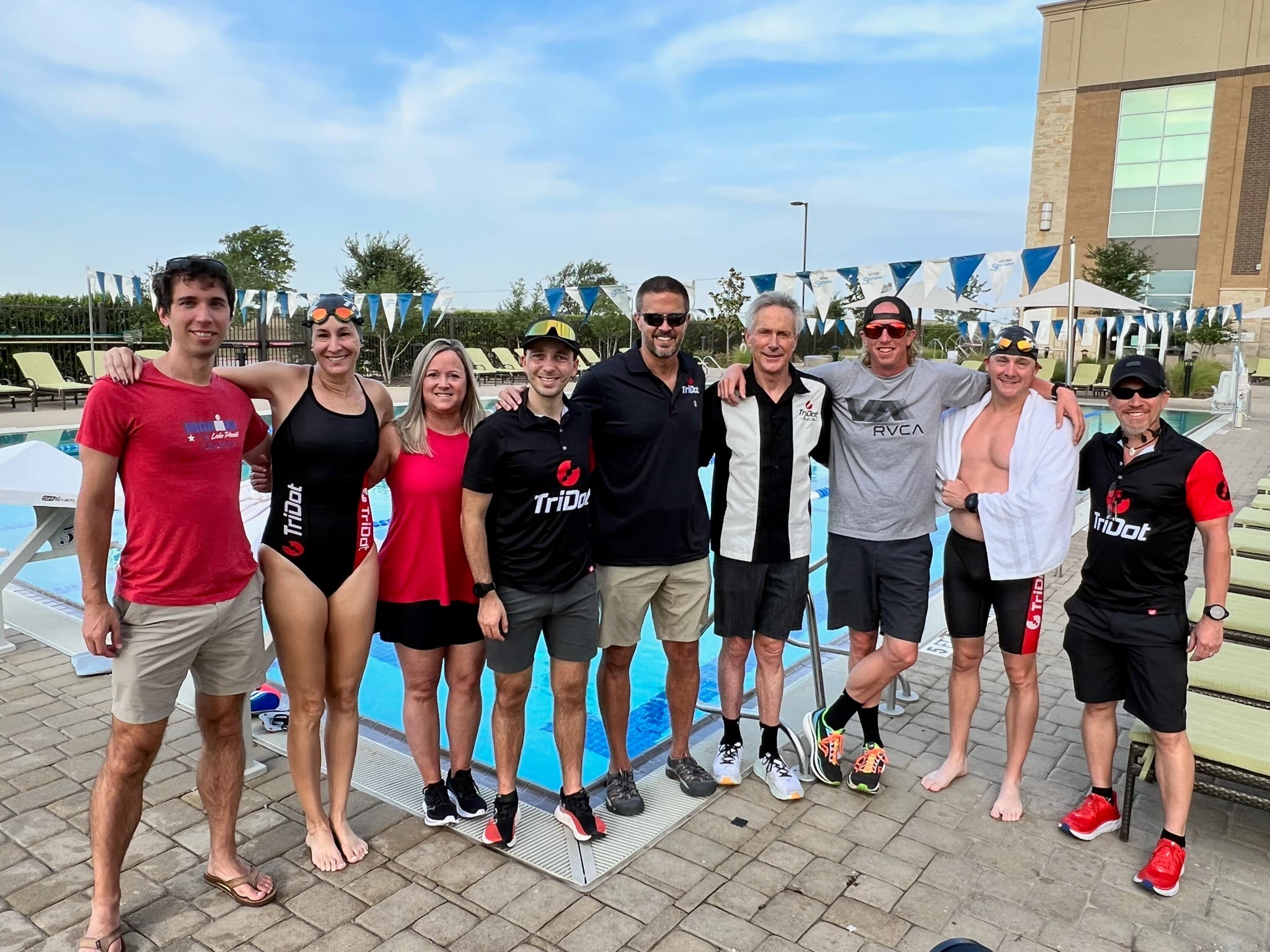Mark Allen’s “Game Changing” New Training Platform

Triathlete legend Mark Allen has become a legendary coach (Photo: TriDot)
Mark Allen finds it funny that people still think of him, first and foremost, as the greatest endurance athlete of all time. It’s not that those people are to blame. After all, ESPN awarded him that exact distinction in 2012. And he did win six IRONMAN World Championships—including five back-to-back, an accomplishment no one else has ever repeated.
But the truth, says Allen, is that he thinks of himself more as a coach than an athlete these days. Instead of advancing the sport as a competitor, he’s now pushing it into the future from the sidelines, both by providing his unique insight and by embracing cutting-edge tech.
Allen’s identity shift makes pure practical sense too. He’s now been coaching for 28 years, almost twice as long as he spent on the competition circuit; he hasn’t registered for a race since crossing the finish line in Kona in 1995.

“I don’t ever have that feeling like I need to win another race. I satiated that part of myself,” he says. “It’s like when you have a good big delicious meal. When you’re done, you’re filled. You don’t need to go eat it again. It’s sort of like that with racing.”
These days, he spends most of his time in Santa Cruz, just a few blocks from the beach. He runs, surfs, leads retreats, gives speeches, keeps up with his spiritual practice—a nature-based tradition called Shamanism—and, of course, coaches. The surfing and nature time keep him grounded. But it’s the coaching that feeds his lifelong quest for constant improvement, especially now that new technology is poised to completely change triathlon training.
Of course, to fully understand how game changing this new tech is, you first have to understand how far training tech has come.
When Allen started racing in 1982, he says the only tracking tools available to him were a stopwatch and a speedometer.
“You could time the loops you did on a bike or run but there was nothing that really tracked anything accurately,” he says. That slowly changed as heart-rate monitors, GPS units, and later wearable trackers started to come online. But even with all that, coaches were more or less in the dark about what athletes really needed to improve.
That’s because gathering data was only half the battle, Allen says. Neither athletes nor coaches had anything powerful enough to actually analyze all the numbers that were flooding in day after day, workout after workout.

“People love to open up [their device] after a bike or run and look at all the graphs, but that’s more entertainment than anything,” Allen says. “We just didn’t have the computing power to take this stuff and have it influence how an athlete’s future training was crafted.”
Allen spent years searching for some kind of program that could analyze—and actually use—the massive amount of data he had coming in. Fortunately, he wasn’t the only one.
About 20 years ago, Jeff Booher, a four-time IRONMAN finisher, triathlon coach, and former systems engineer, started building an Excel spreadsheet. At first it was just a chart to inform his own training plans and those of a couple dozen training buddies. But as the data set grew, the analysis steadily got more complex. Before long, Booher was developing algorithms to quantify training stress and normalize training results based on things like age, gender, and physical location.
After several years, he’d amassed a vast database of training and race data. Booher had also developed a comprehensive framework to normalize that data, quantify training stress, and drive training decisions. The potential of such a database was hard to overlook. So, in 2011, Booher filed for patent protection. He later hired a team of professional software engineers and data scientists to take the project to the next level.
The engineers’ response? They scratched their heads. They told him that what he had was unbelievable—that they’d never seen something that sophisticated programmed in Excel. Then they got to work.
Over the next few years, the engineers worked to turn Booher’s passion project into a powerful intelligence engine using AI, machine learning, and other leading-edge technologies. The result was a platform that would not only build training plans based on a comprehensive set of inputs for a given athlete (including even the athlete’s genetics), but would also adjust and optimize those training plans in real time. The technology constantly collects training data: everything from heart rate, watts, and pace to environmental conditions like heat, humidity, and elevation.
All those numbers stream into the algorithm. In response, the algorithm automatically adjusts future workouts and their target effort levels to optimize both gains and recovery. Booher named his new program TriDot. (Fittingly, the “DOT” stands for Data Optimized Training.)
When Allen learned about the new tech, he was dumbfounded.
“I was like, ‘Oh my God. This is exactly what I was looking for, and it just got dumped in my lap,’” he recalls. Suddenly a huge veil had been lifted. Allen no longer had to diagnose athletic weaknesses based on hints and hunches. He had a diagnostic technology that revolutionized his coaching.

Before TriDot, Allen says, “Being a coach sometimes felt like being an old-time doctor with a stethoscope. You hold it up, and you say, ‘Cough. Now, breathe…OK, wow, I think you’ve got something wrong.’ And the athlete says, ‘Of course I have something wrong. Why can’t you tell me what it is?’ Fast-forward to today, and doctors can do CAT scans and MRIs and all this stuff that’s so advanced technologically that it lets them be better doctors. That’s what TriDot enables us to do as coaches.”
TriDot has revolutionized how Allen works with his athletes. Before adopting the platform, he says he was spending 90 percent of his time pouring over data, building training plans, and adjusting workouts. That meant he had only a few hours left over each week to spend working directly with his athletes, giving advice, and fielding questions—you know, actually coaching.
With TriDot, that ratio has flipped. “Now I can spend more like 10 percent on the training plan and 90 percent on the coaching,” he says.
That’s a total gamechanger. It’s also one of the reasons Allen joined the TriDot team earlier this year. He’s currently collaborating with TriDot on a new Mark Allen Edition of the program, which will combine Booher’s powerful algorithm with Allen’s wisdom and experience. (The Mark Allen Edition will launch online in fall 2022, and the waitlist is open now.)
“I like working with companies that are on the cutting edge of what they’re doing,” Allen explains. “That’s where I tried to stay when I was racing. I never wanted to be in the middle of the bell curve. I wanted to be on the far right side of it, paving the way for stuff that, in the future, everyone will do. That’s what TriDot has—a vision that goes well beyond the bell curve.”
For Allen, the interesting part of competing was figuring out how to optimize his mind and body as an athlete. He solved that puzzle. Now that he’s a coach, he gets to help solve that puzzle for others. With TriDot, Allen says, coaches are going to be able to find those solutions faster and more accurately. That means they’ll be able to spend way more time helping athletes work on their mental game and strategy. At the end of the day, those are the things that push limits and break records.
Thanks to TriDot’s innovative technology, Allen says, the future of the sport has never been brighter.
To join the waitlist for the Mark Allen Edition, click here.
TriDot, a division of Predictive Fitness, is a platform that provides Optimized Triathlon Training® for triathletes. Its patents-pending technology uses each athlete’s biometrics and training data along with big data and artificial intelligence to design and optimize training for athletes, with or without a coach. It produces substantially greater results in up to 30% less training time.